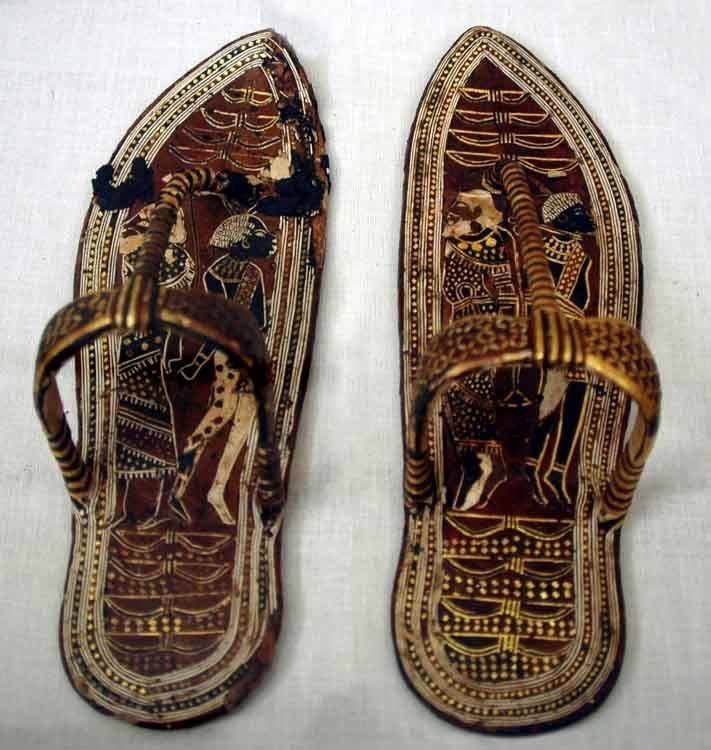AESCHYLUS IV
— Allen J. Romano, allenjromano@gmail.com
Week 4: Battle of the Sexes
1.1 The Danaid Myth
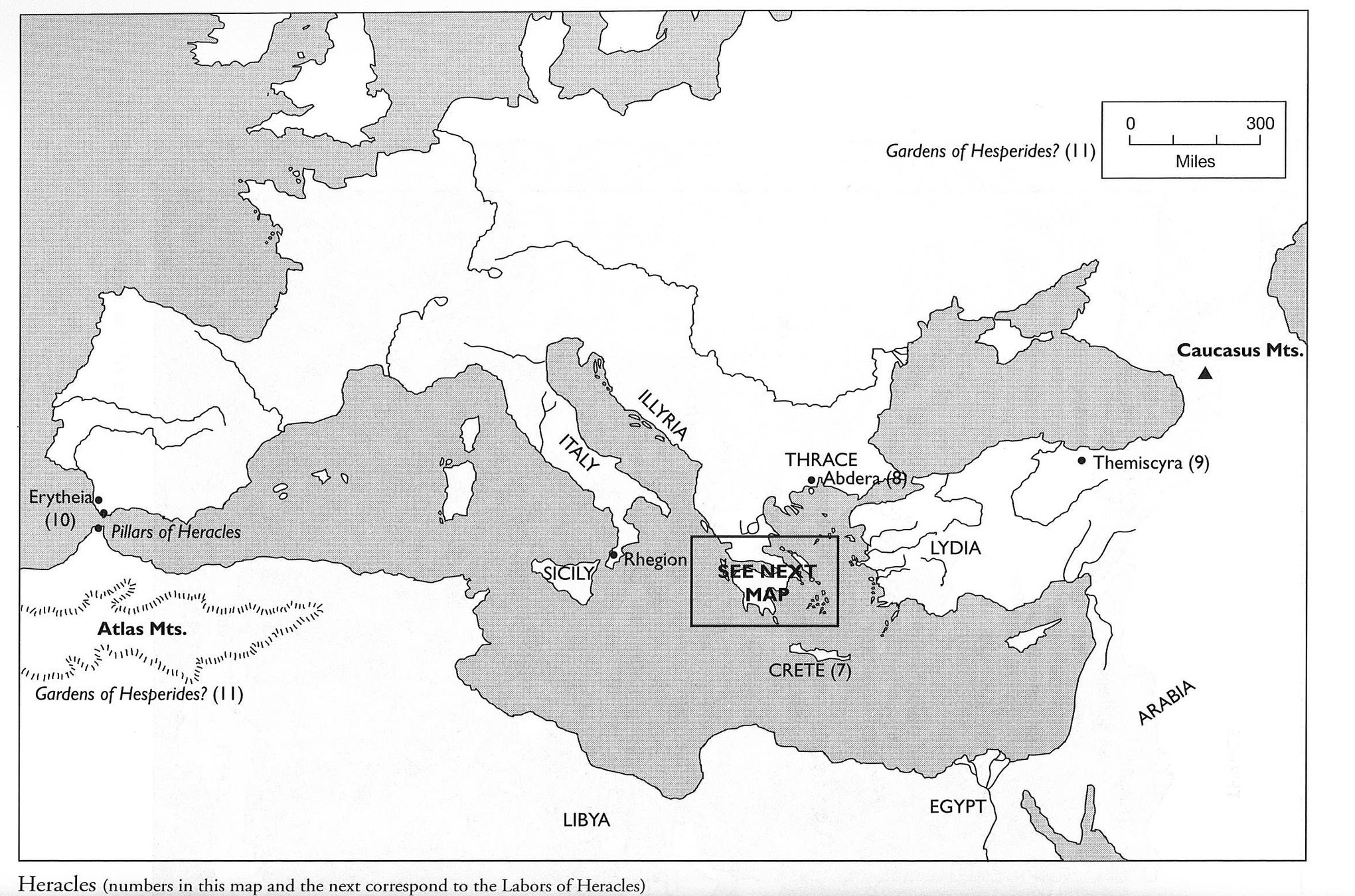
Danaus
- king of Libya
- founder of Argos
- father of 50 daughters (Danaids)
- brother of Aegyptus
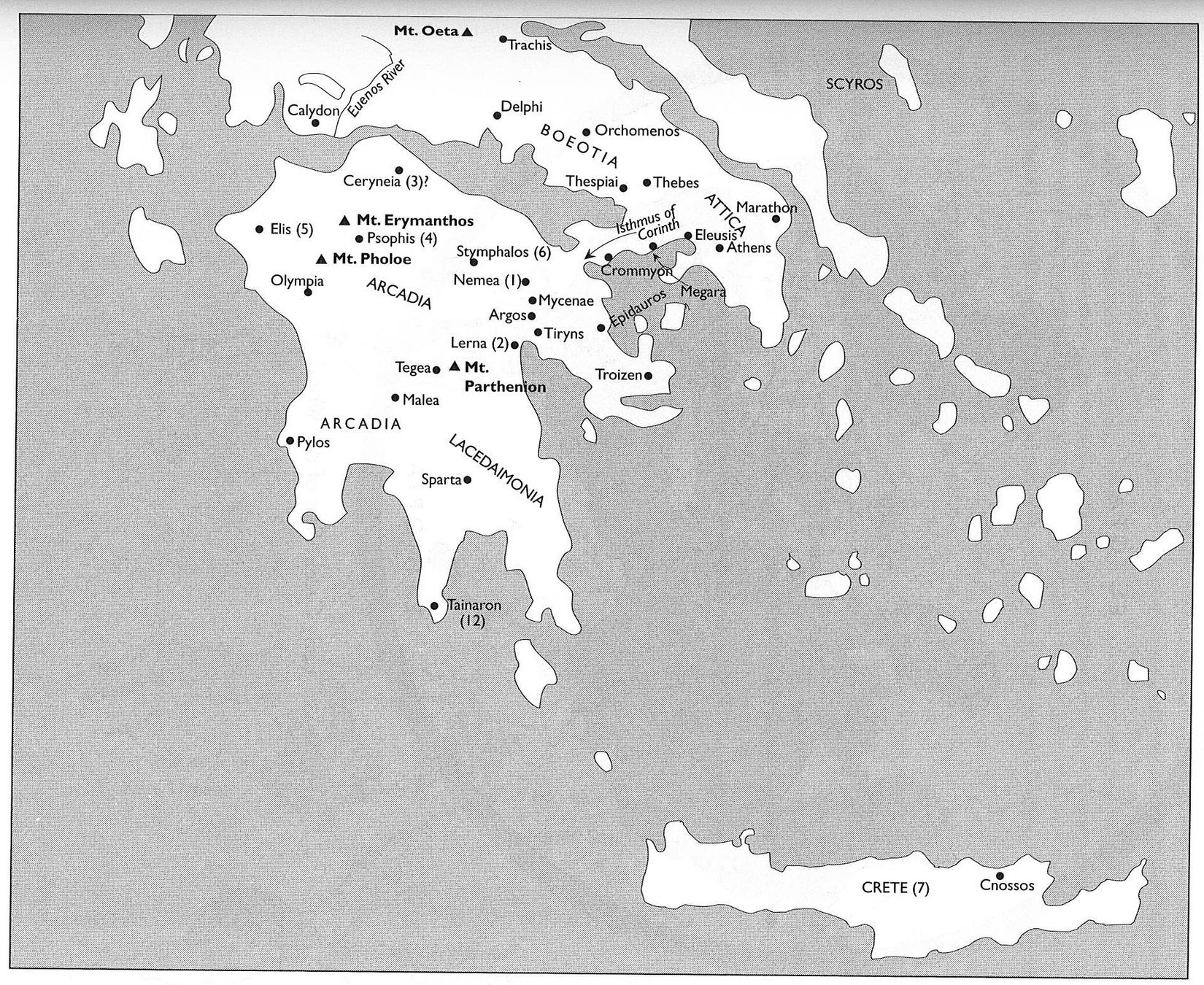


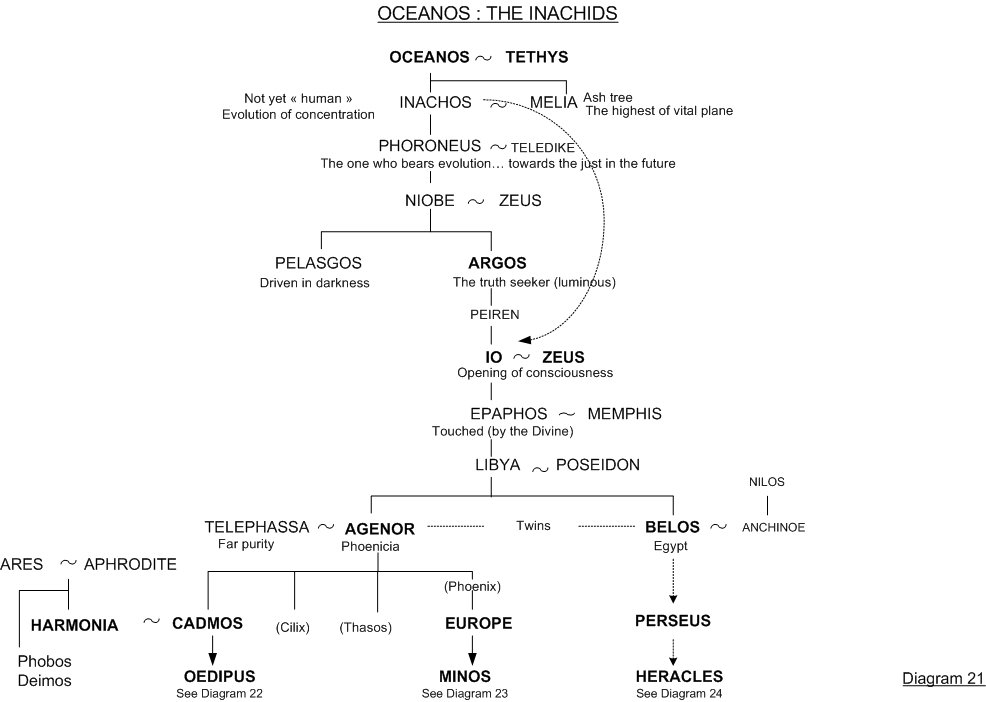
father of Danaus

Cosmic Origins

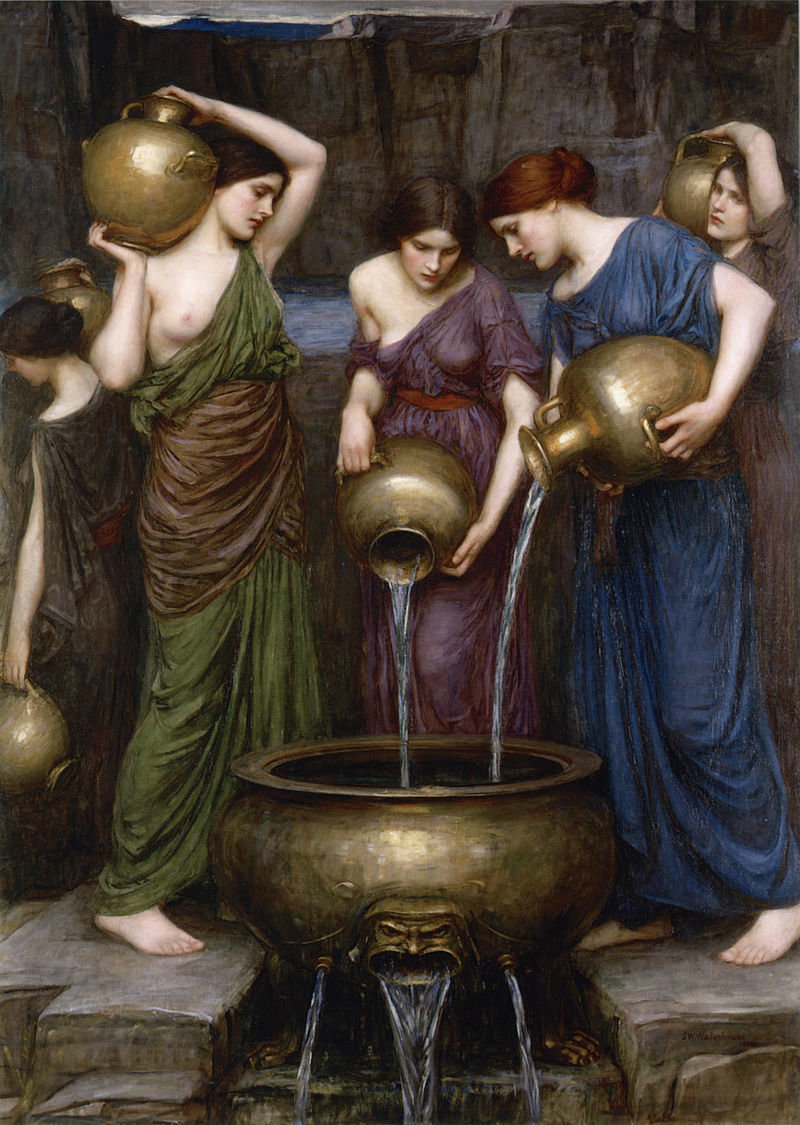
Danaids
Waterhouse, 1903
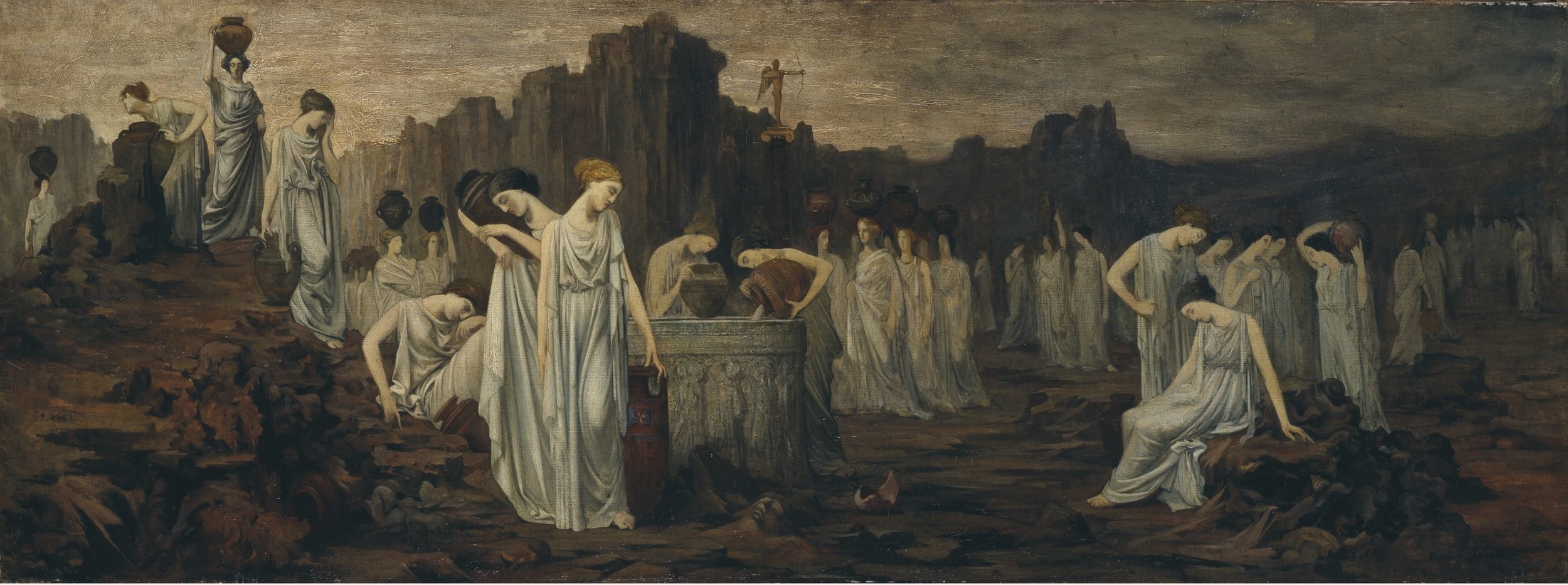
1.2 Aeschylus' Danaid Tetralogy
484 BCE
Aeschylus First Victory
472
Persians
468
Sophocles' First competition
?463
Suppliants
467
Seven Against Thebes
458
Oresteia
Suppliants
sometime 470(?) - 459 BCE
Supplication
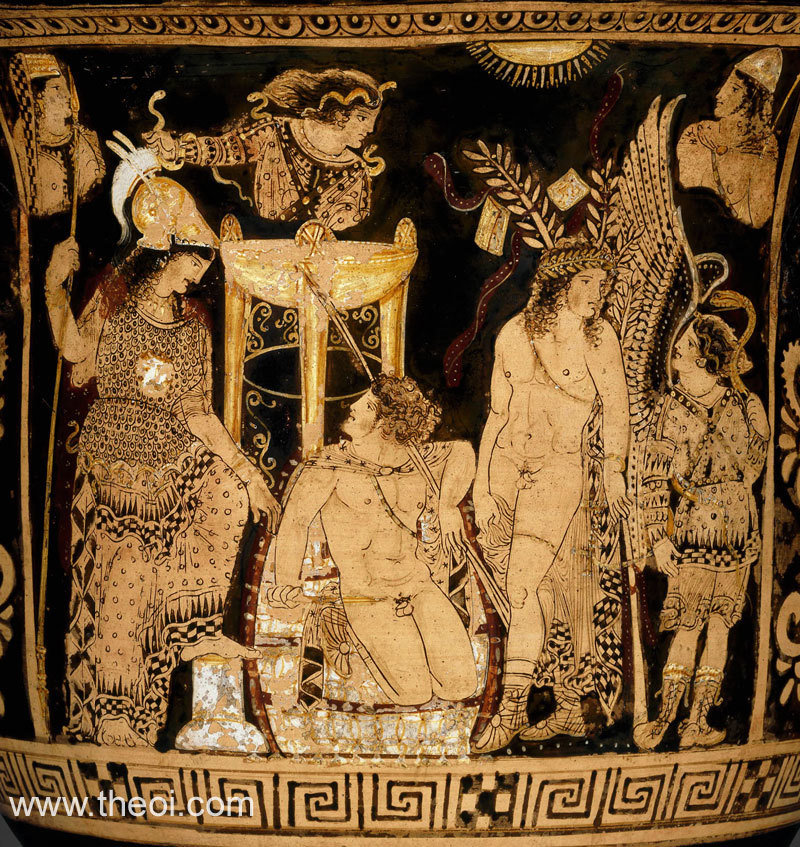
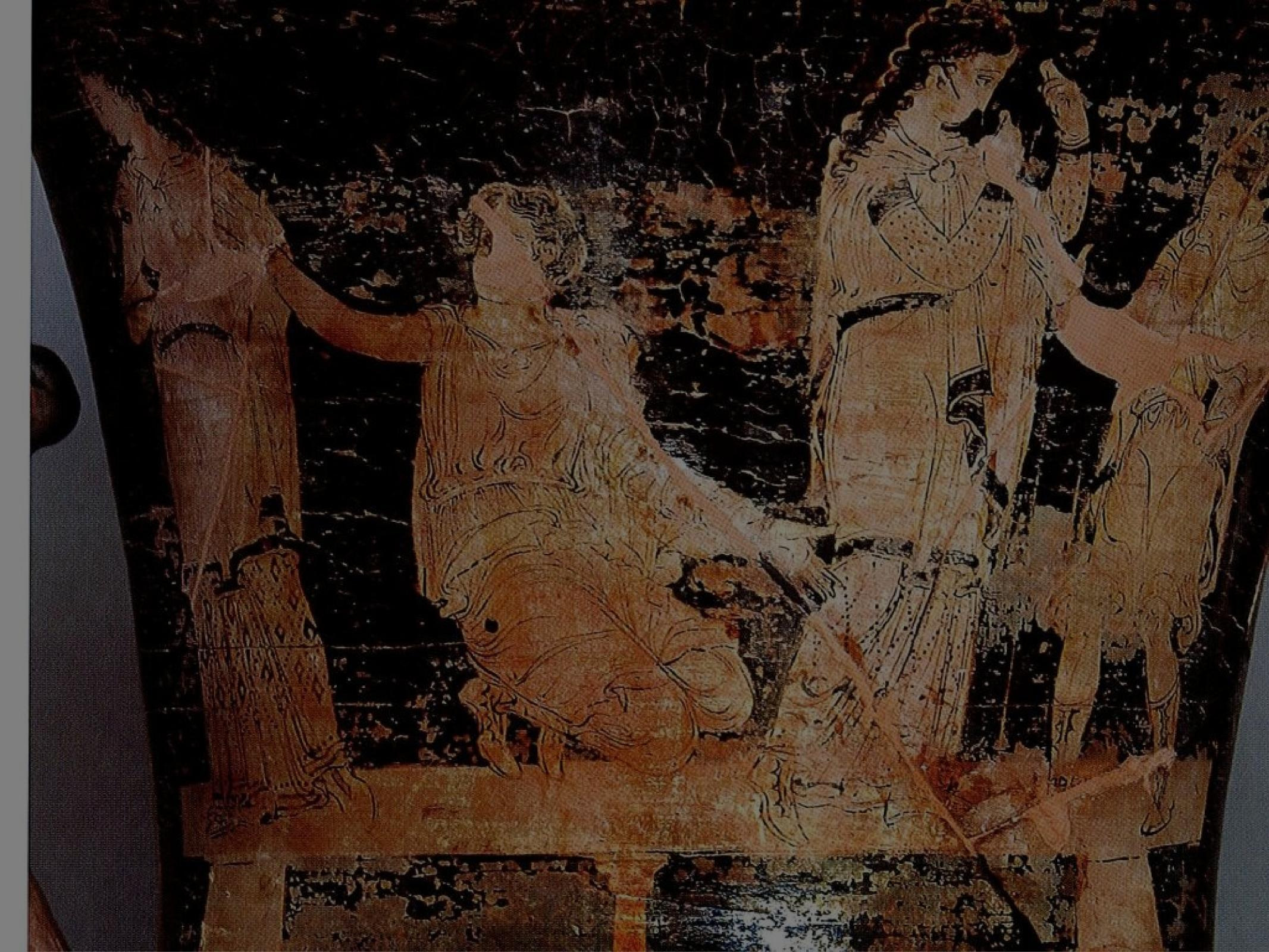
- Laius, Oedipus, Seven Against Thebes, Sphinx
- The Oresteia: Agamemnon, Choephori, Eumenides, Proteus
- Edonoi, Bassaridae, Neoniskoi, Lykurgos
Suspected: -
Egyptians, Suppliants, Danaids, Amymone
-
(Iliad) Myrmidons, Nereids, Phrygians Thalamapoioi
-
(Odyssey) Psychagogoi, Penelope, Ostologoi, Circe
-
(Aethiopis) Cares, Memnon, Psychostasia
-
(Ajax) Decision of Arms, Thracians, Salaminians
-
(Dionysus) Semele, Xantriai, Pentheus, Trophoi
-
(Adrastus) Eleusinians, Argives, Epigonoi, Nemea
-
(Argonauts) Lemnians, Hypsipyle, Kabeiroi, Argo
Tetralogogies = 3 tragedies + satyr play
〞
– Egyptians
〞
And then will come the brilliant light of the sun, and I will graciously awake the bridal couples, enchanting them with song with a choir of youths and maidens
– Danaids, fr. 43
〞
The holy Heaven passionately desires to penetrate the earth, and passionate desire takes hold of Earth for union with Heaven. Rain falls from the brimming fountains of heaven and makes Earth conceive, and she brings forth for mortals grazing for their flocks, cereals to sustain their life, and the fruit of the trees: by the wedlock of the rain she comes to her fulfilment. Of this, I am in part the cause.
– Conrad Anker
APHRODITE:
fr. 44
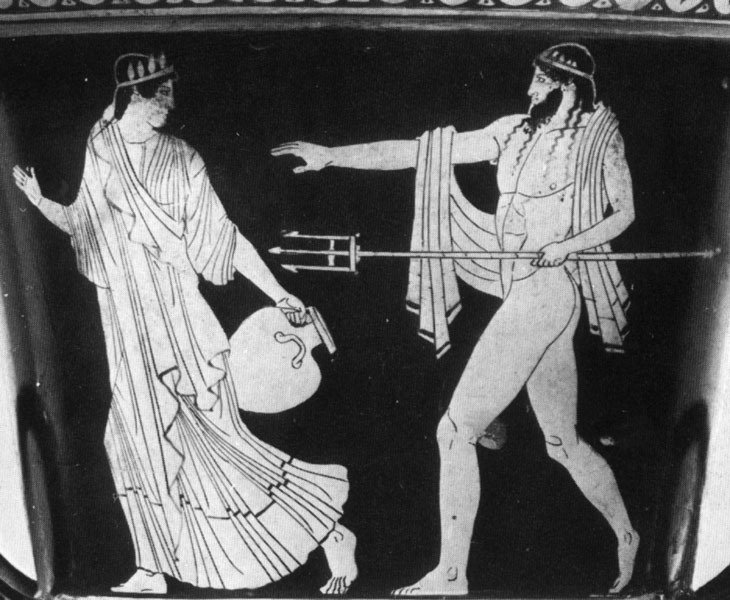
Amymone and Poseidon
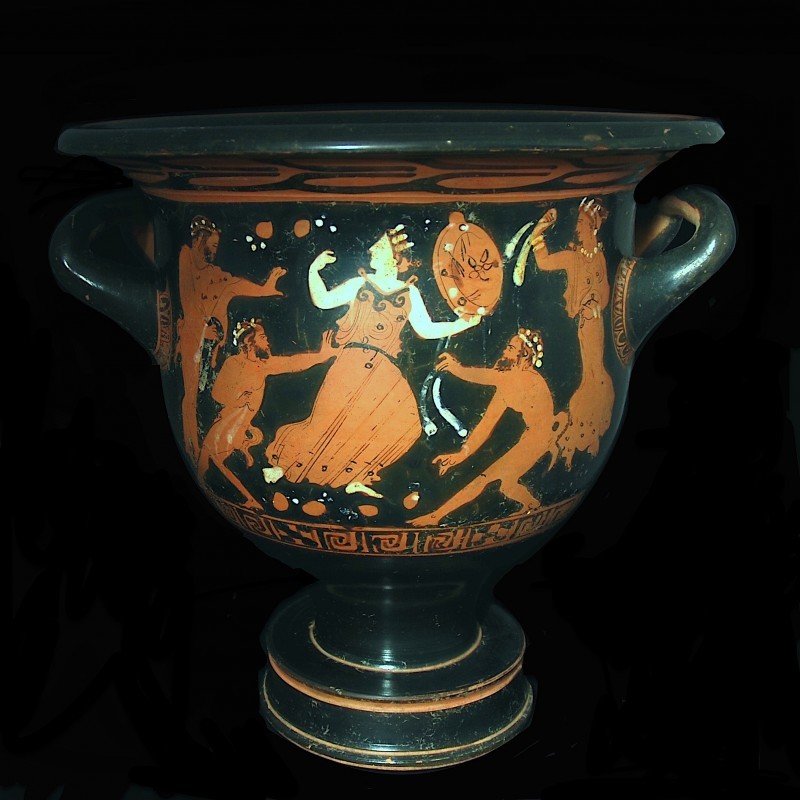
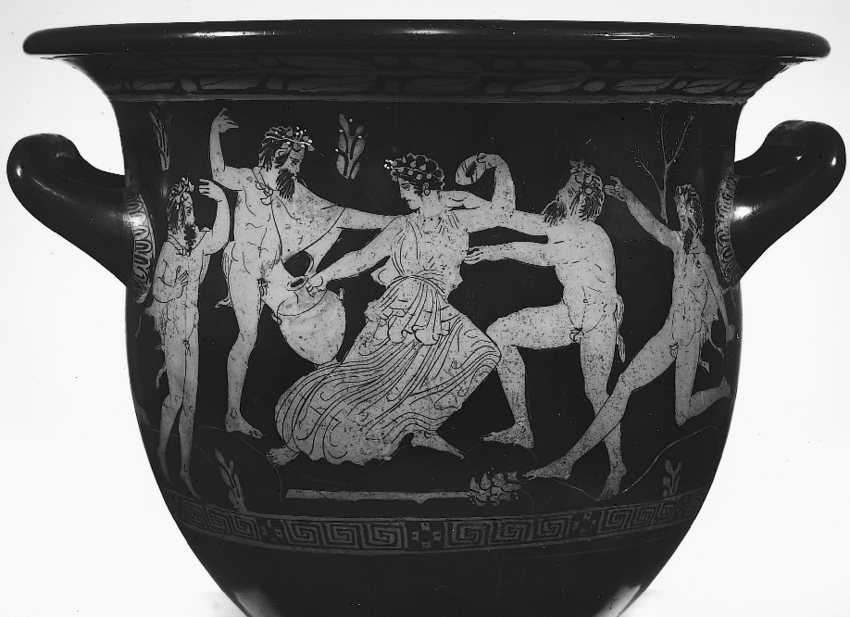
Digression
Ultimate Nerdification: The most important Aeschylean papyrus fragment of all time
P. Oxy 2256
fr. 3
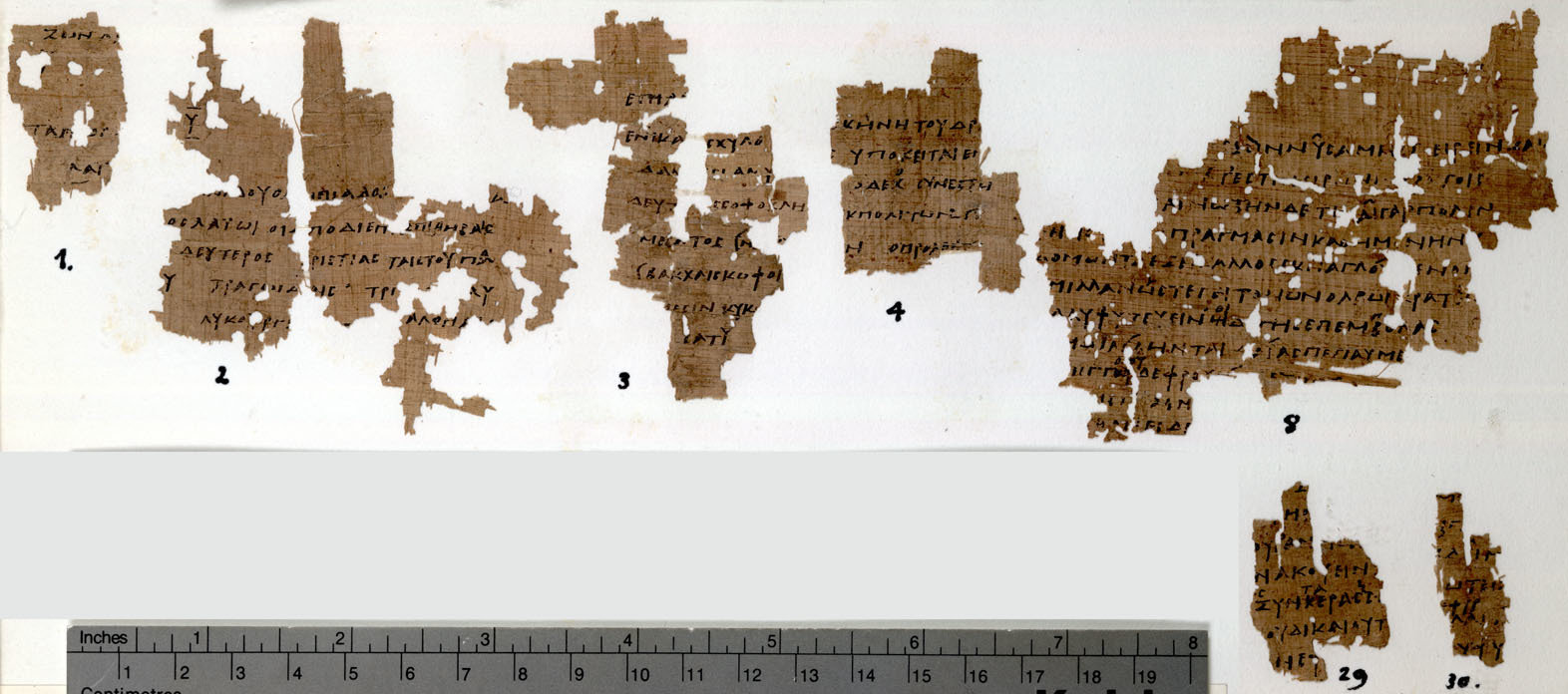

Ai]sxulo[s
Dan[aid]es Amu[mone
Deu[teron] Sophoklh[s
epi a[r or epi A[r
1.3 An abundance of Lyric


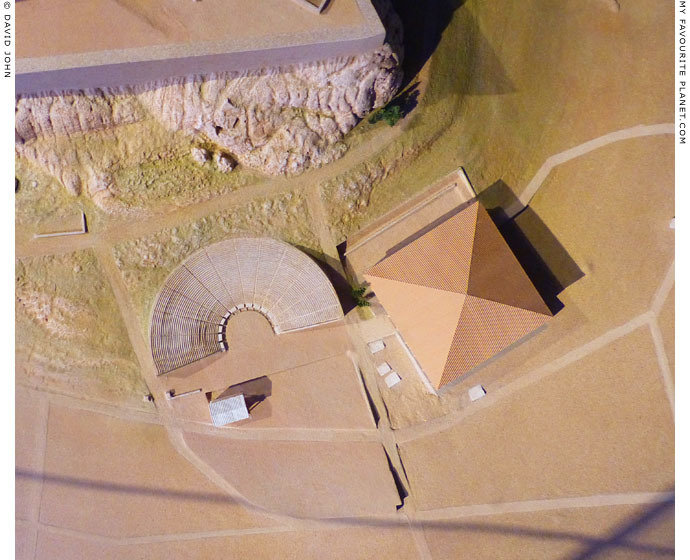
2.1
Egyptians


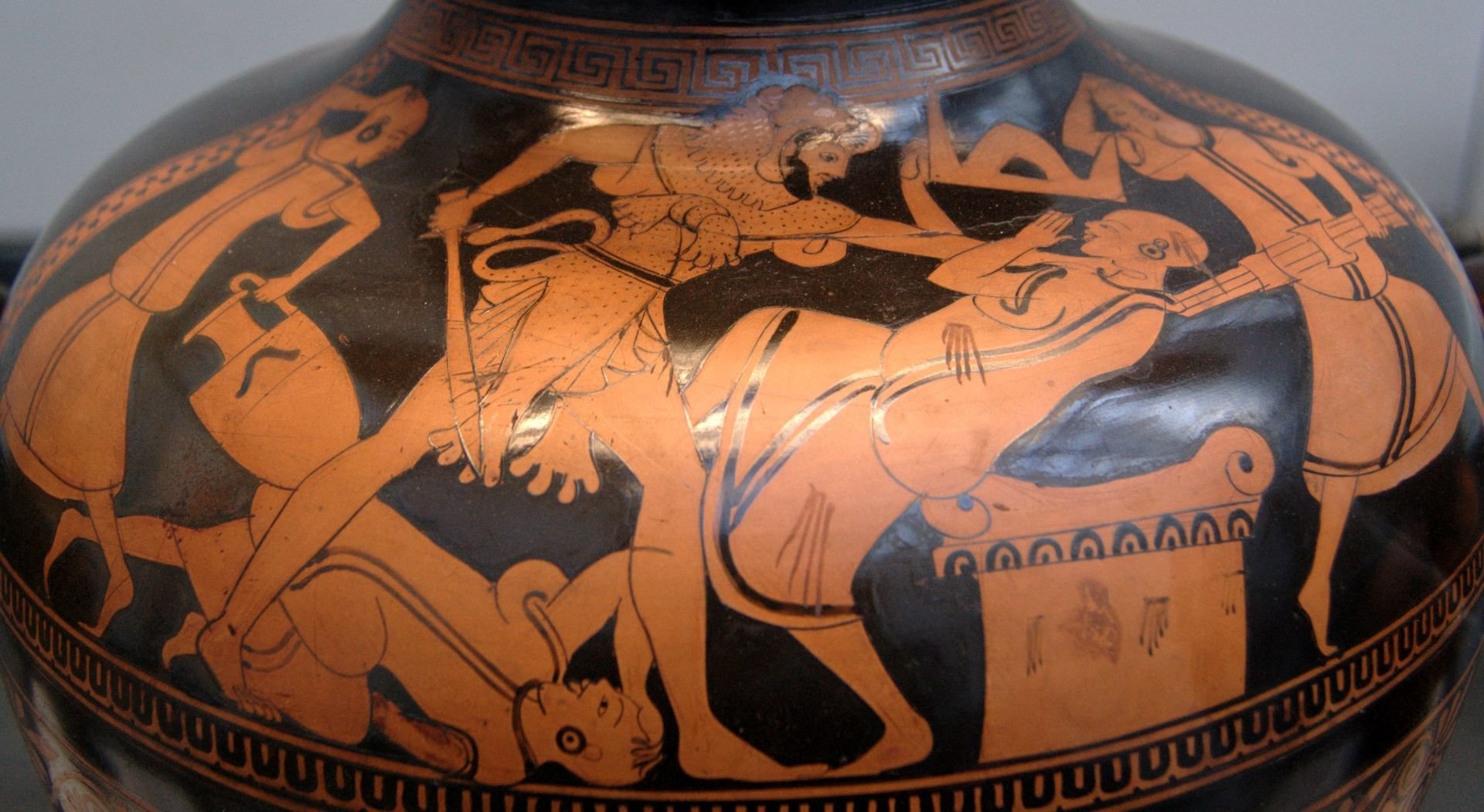
Busiris
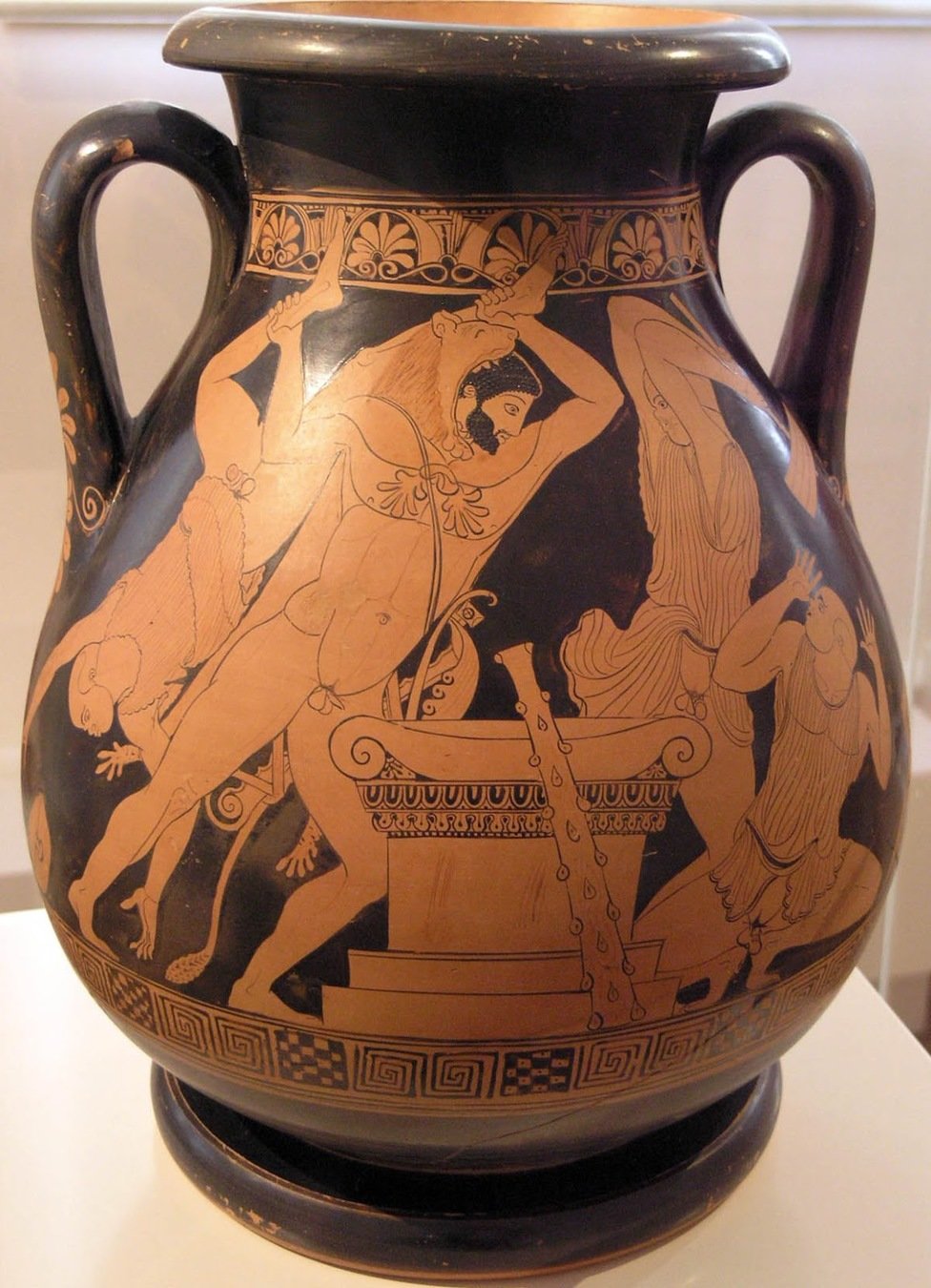

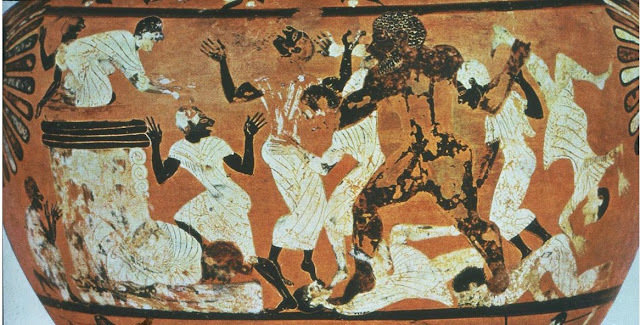

Narmer Palette
c. 3100 BCE
